There's nothing quite as nice as coming home from a long day of work to soak in your pool. There's a difference, though, between lounging in perfectly pleasant water and shivering in a pool that's gone cold.
You can turn to a pool heater to make your afternoon soaks more pleasant. But where should a pool heat pump be installed, and can you keep one in full sunlight?
You can install your pool heat pump within a meter of both your home and your pool, provided it has access to the following:
- Consistent sunlight
- Circulating air
- An appropriate power supply
- Ideal water levels and plumbing
- A strong base
When you keep your pool heat pump in direct sunlight, it may even do its job more efficiently than it might otherwise. That said, you can work with professional contractors to meet your unit's specific needs upon installation.
In this post, we'll discuss the topic of pool heat pump installation in more detail. Without further ado, let's get into it.
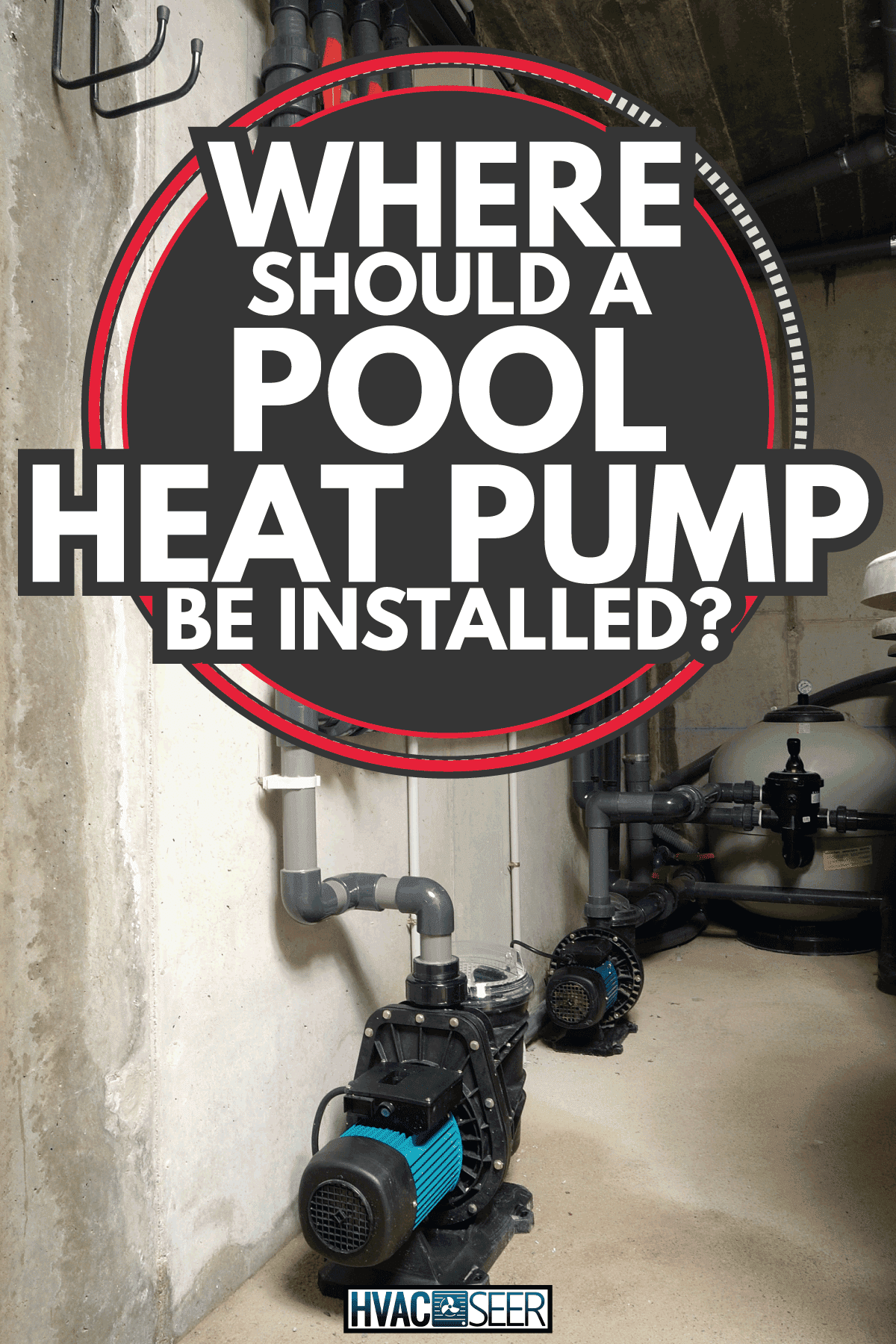
Where Should A Pool Heat Pump Be Installed?
The ideal location for your pool heat pump is going to vary based on the brand of pump you've invested in. That said, each unit has needs. You'll want to consider the spacing, water flow, electrical access, and security of your pump before you permanently install it.
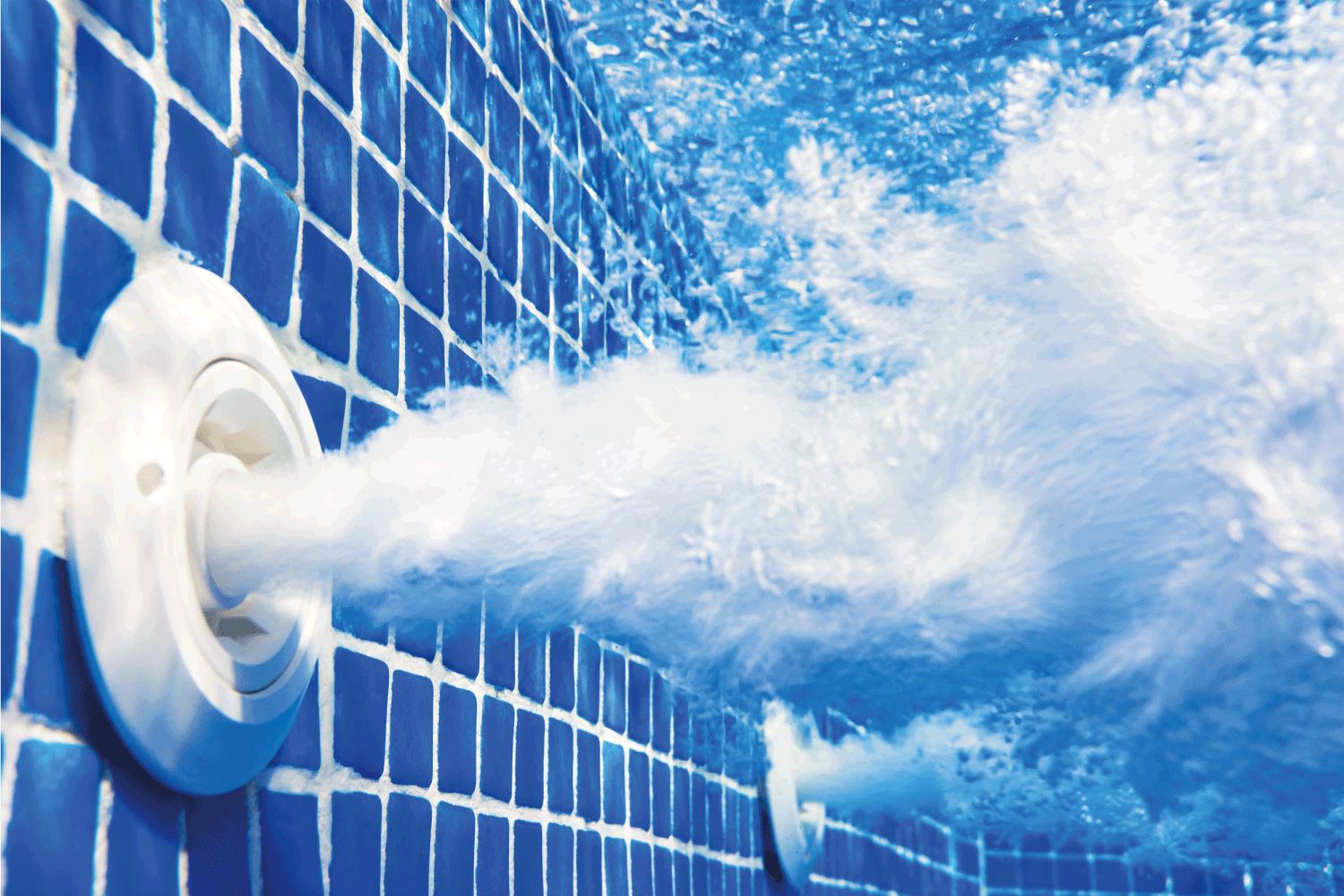
Air Circulation And Your Pool Heat Pump
Your ideal pool heat pump location will allow for good air circulation. If you don't expose your pump to regular ventilation, there's a chance it may overheat or recycle previously-used air.
Read more: Pool Heater Smoking – Is This Okay?
Pool heat pumps that have regular access to flowing air can also avoid problems with recirculation. With this in mind, try and find a location for your pump that's free of obstacles.
Finally, make a note of the direction your fan is positioned in. If you own a pool heat pump with a vertical fan, you'll want to leave a reasonable amount of room between that fan and any yard elements.
Everything from your shed roof to hanging tree branches can disrupt your fan's efficiency. You can apply the same logic to heaters with horizontal fan models.
What Kind Of Plumbing And Water Flow Does A Pool Heat Pump Need?
Your pool pump and your pool heat pump need to collaborate if both are going to work as efficiently as possible. Before you install your pool heat pump, check and see what kind of water flow it requires to function.
Then, position your pool heat pump near enough to your pool pump that the water level it's exposed to meets the heat pump's stated requirements.
In this same vein, you'll need to make sure that the pipes you have running through your pump are large enough to handle its essential water flow. On average, 2-inch pipes are ideal for ensuring that your pool heat pump has access to the water it needs to function.
Your Pool Heat Pump's Electrical Needs
No pool heat pump is going to run without ready access to electricity. With that in mind, your pump should be within workable distance of a powerful enough electric supply to keep it running as necessary.
Your pool heat pump is going to demand more electricity when it first starts up. Make sure you connect the pump to a circuit breaker that can manage that initial startup without tripping.
You'll also want to be able to ground your pump without having to stretch essential wiring to the point of damage.
If you're working with a specific crew throughout the installation process, talk to the team lead about the benefits of an electrical connection box. This control panel for your pool heat pump can make it easier to both install your pump and manage its care over time.
Securing Your Pump To A Base
Last but not least, provide a stable base for your pool heat pump to rest on. You can make this base out of concrete or wood.
You can set aside a specific part of your yard—ideally within a few feet of your pool—for your system's base. Without this essential support, you risk letting your pump fall victim to environmental damage.
What's more, your pool heat pump may take on damage from its natural condensation. With that in mind, make sure that the base you install can drain that condensation away from your essential electrical equipment.
You'll also want to place your base on a part of your lawn that has a positive grade so that the excess moisture can flow away from the unit.
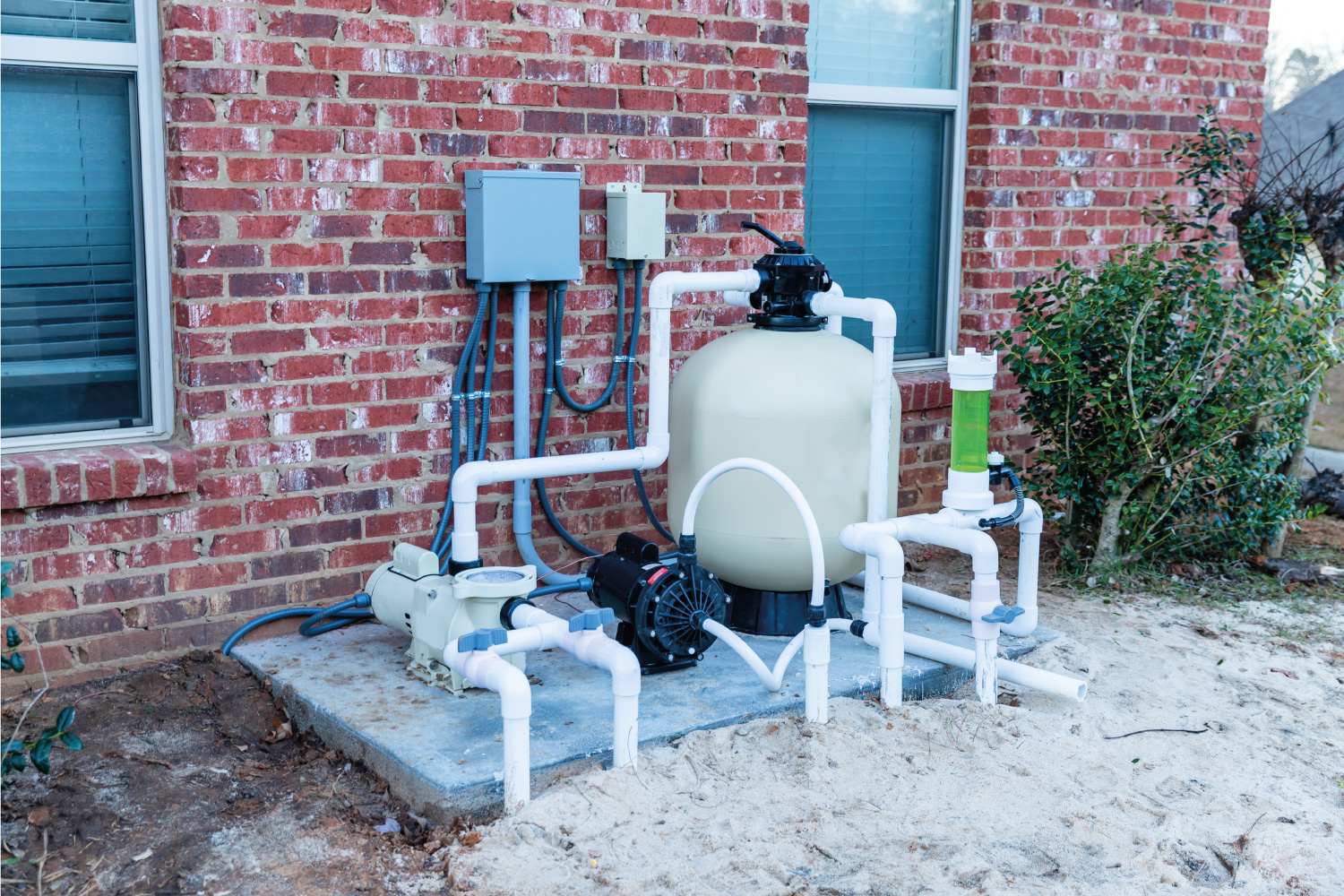
How Does The Sun Affect My Pool Heat Pump?
In general, the sun will make it easier for your pool heat pump to do its job. Regular exposure to direct sunlight will keep your heater warm, meaning that it will need to exert less power to warm up the rest of your pool.
Solar-powered pool heat pumps also thrive when exposed to consistent sunlight. You'll want to keep obstacles out of a solar-powered pool heat pump's way both to keep the fan operational and to warm your pool as efficiently as possible.
How Far Can A Pool Heater Be From The Pump?
You need to leave a reasonable amount of distance between your pool heater and your pool pump.
When you give your pool heater at least 24 inches of horizontal clearance and up to 60 inches of vertical clearance, you ensure that it continues to run as efficiently as possible.
On the other hand, your pool heater and your water pump collaborate with one another. Your pool heater needs regular access to flowing water.
With that in mind, it's a good idea to install these two accessories relatively close to one another. Keep the distance between them relegated to a meter (36 inches) at least, all the while giving your heater the room it needs to breathe.
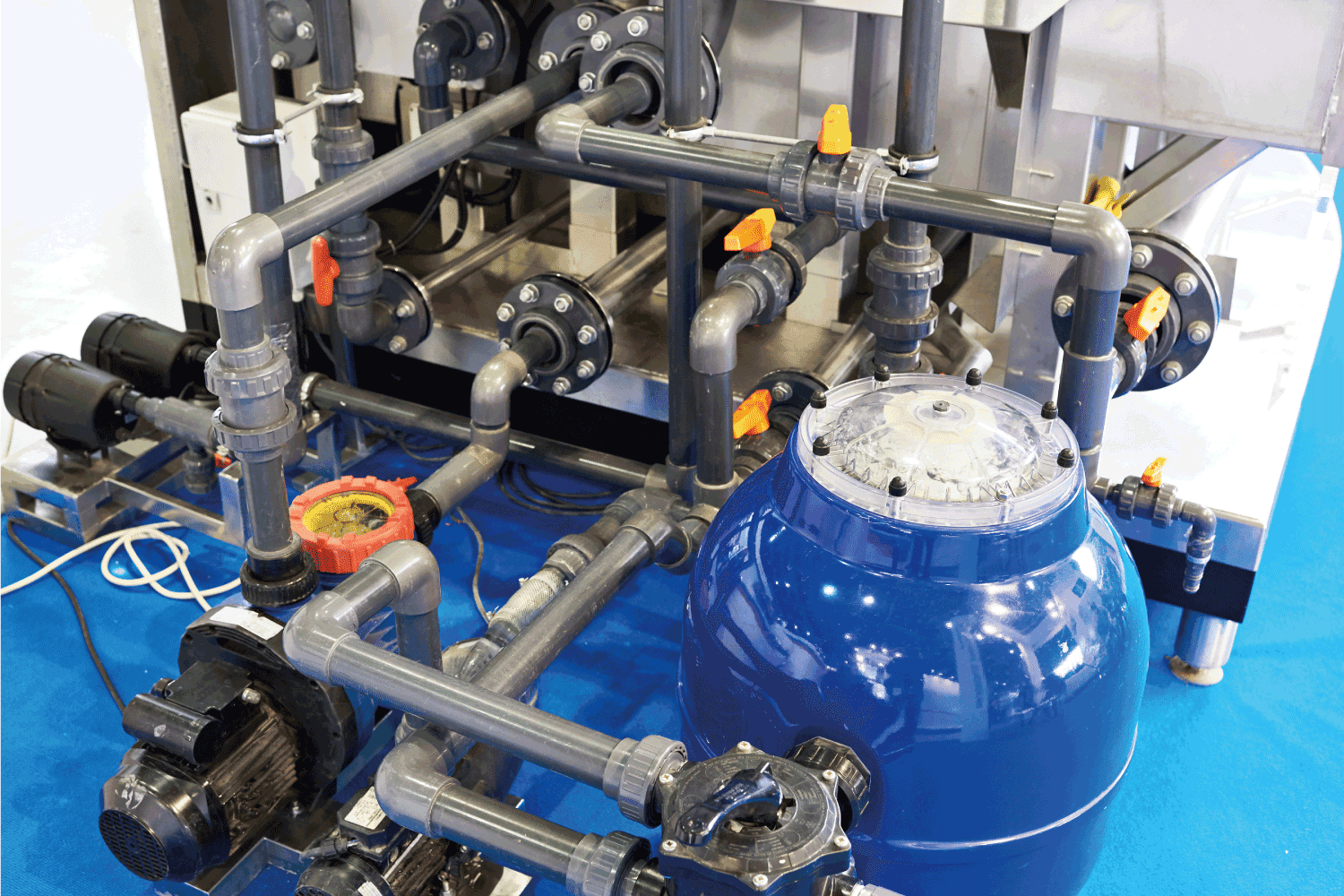
How Far Should A Pool Heater Be From The House?
Your pool heater's power supply is likely to be located relatively close to the rest of your home. You'll need to install your pool heater within a reasonable distance of the supply needed to keep it operational.
Again, though, you'll want to ensure that your pool heater has the room it needs to healthily cycle through air.
You can base the distance between your pool heater and home based on a) the availability of your power supplies and b) the distance you feel comfortable crossing with essential wires.
In general, it's a good idea to keep your pool heater within the supply you intend to connect it to.
Can You Enclose Your Pool Heater?
It's not a good idea to enclose your pool heater. While you can install an awning to protect your unit from poor weather, you shouldn't allow your pool heater to recycle its air.
With that in mind, try to keep any obstacles, be they personally installed enclosures, trees, or bushes, away from your pool heater's fan.
Can You Add A Heat Pump To An Existing Pool?
A pool heat pump can raise the temperature of your pool by at least ten degrees.
If you want to add value to a pool that you already have on your property, you can absolutely ask the professionals in your area to install a new heat pump.
As you're shopping for a new heat pump, you'll find three options on the table: gas-powered pumps, electrically-powered pumps, and solar pumps.
Read more: What Size Propane Tank Do I Need For My Pool Heater?
Solar pumps are some of the most energy-friendly pumps on the market provided you have regular access to sunlight and good weather.
Comparatively, both gas and electric heaters can help you combat unpredictable temperatures in cooler climates—at a cost, according to Statistica.
Note that if you want to install a gas or solar heat pump, your heat pump's electrical requirements will change. You may be able to position your pool heat pump further away from your home thanks to the heater's versatility.
Should You Leave A Pool Heat Pump On All The Time?
Many homeowners worry about the jump they may see in their electrical bill after installing a pool heat pump.
As such, some homeowners may be tempted to run their heat pumps intermittently. Unfortunately, this trick can actually cost you more money than running your pool heat pump continuously would.
Every time you start up your pool heat pump, it requires a significant jolt of energy. This initial burst helps the pump get up and running while also combatting the significantly decreased temperature of your pool.
If you leave your heat pump running on a more consistent basis, giving it breaks for essential maintenance, you can keep your pool at a steady temperature.
As a result, your heat pump won't have to work as hard, and your energy bill won't see as many spikes related to your usage.
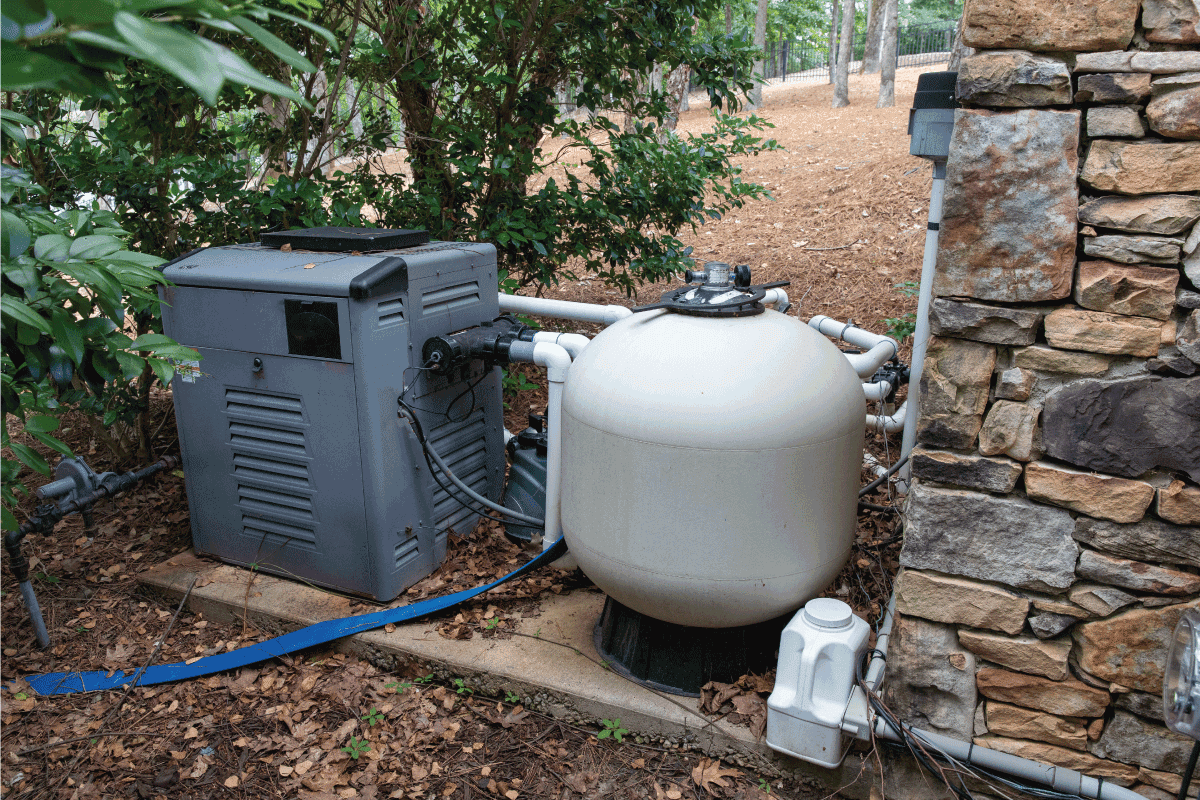
Learn More About Your Home's Pool Heat Pump
The best way to efficiently use your pool's heat pump is to know what kind of requirements your specific unit has.
You can talk with local retailers about your pool heating options and fit your existing power supply and lawn arrangement to the heater that suits your needs.
This way, your heater benefits from the connections—and the sunlight—that will keep it operational for as long as possible.
